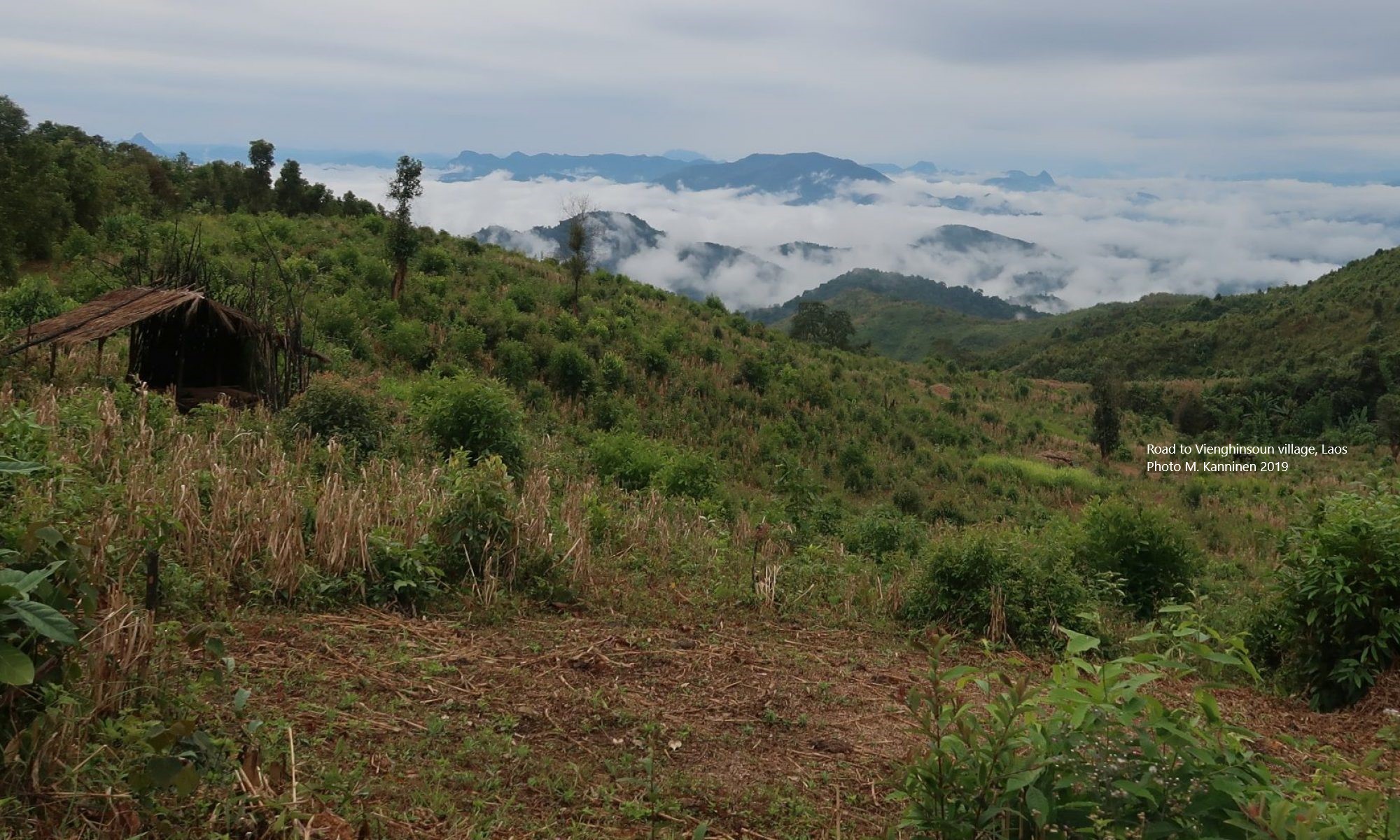Biomass Monitoring and Harvest Planning System for Sustainable Supply of Renewable Energy, Cambodia (2011-2013)
Partners
University of Helsinki, VITRI
Groupe Energies Renouvelables, Environnement et Solidarités (GERES)
Oy Arbonaut Ltd
VITRI team
Dr Jörn Laxén, Project coordinator
MSc Adrián Monge Monge
Funding (Nov 2011 – May 2013)
The Energy and Environment Partnership Program (EEP) with the Mekong Region (Ministry for Foreign Affairs of Finland) and World Bank).
Background
Over 84% of households in Cambodia meet their energy needs through fuelwood, which supplies approximately 70% of the total national energy demand. Rural families use on average around 5 kg of fuel wood per day, while urban families use around 2.1 kg per day, mainly in the form of charcoal (urban consumption is complemented by other energy sources such as LPG and electricity). Total residential firewood demand (including that used directly and that converted into charcoal) in 2007 was estimated at approximately 5,500,000 tons nationally. As shown in Figure 1, the direct use of fuelwood for cooking is set to decrease, due largely to substitution by other energy sources; however, this reduction is estimated at less than 50% over the next 20 years, while over the same period the consumption of charcoal (produced from the same raw material as the fuelwood that is used directly) is expected to triple.
The capital city of Phnom Penh is a major consumer of wood-based energy, much of which is obtained from the provinces of Kampong Speu, Kampong Chhnang and Pursat that lie to the north and west of Phnom Penh, and east of the Cardamom Mountain Range, its protected areas and the Phnom Aural Wildlife Sanctuary.
A large proportion of the existing forest estate is degraded: it is estimated that there is around 2,600,000 ha of degraded forest land that is potentially available for rehabilitation (Gilmour, 2000). The causes of this deforestation and degradation are manifold and include: logging, firewood extraction (incl. charcoal), wildfires, encroachment, land grabbing, establishment of rice fields, commercial agriculture, road development and human settlements.
In the absence of acceptable alternatives and effective control, charcoal is often made from wood collected from degraded forest and shrub lands. This is resulting in environmental pressure, and contributing to turning deciduous forests into deserted landscapes.
Project vision
The vision is to establish Community Forest-based charcoal production centres using improved, energy-efficient kiln technology, and at the same time strive for the sustainable management of forest resources to supply Cambodia’s charcoal demand. The concept is that community-based associations of wood and charcoal producers would be in charge of managing both charcoal production and the forest resources. Forest resource utilization would respect a management plan with sustainable rates of wood extraction predefined by a quota, and with a reforestation component if needed. This quota would be expected to be assessed annually.
Overall Objective: To achieve sustainable forest resource management and a legalized framework for the charcoal supply chain, contributing to national policies on promoting the use of renewable energy and the preservation of 60% forest cover in Cambodia.
Main Activities
1. Improved charcoal production
Establishing two renewable biomass energy production centres, including training in kiln operations, charcoal production management.
1.1 Setting up of 2 renewable biomass energy production centres (Site selection and construction)
1.2 Training in kiln operation, wood storage and Charcoal production management
1.3 Development of charcoal standard operational procedures (incl. Control mechanisms)
1.4 Testing markets for the charcoal produced
2. Inventory technology & planning toolkit
Tailoring the data collection and sustainable harvest planning toolkit
2.1 Community land use / land cover mapping, technical capacity and data needs assessment for biomass baseline inventory
2.2 Tailoring (localizing) and field testing of the data collection and sustainable harvest planning toolkit
2.3 Biomass inventory of 2000 ha of community forest
2.4 Implementation of the forest biomass monitoring system
3. Sustainable forest management
Training and development of Sustainable forest management systems
3.1 Site selection mapping and inventory of 5 CFs
3.2 CF management planning and the SFM concept
3.3 Development of sustainable harvest & management toolbox for fuelwood and mixed use in deciduous forests
3.4 Training of key forestry professionals, community forest members, and forestry professionals on forest management plans, criteria and indicators to assess the achievements in forest management planning goals, sustainable participatory fuelwood harvesting and other SFM aims
4. Institutional capacity building at national level
Coordinating institutional training to MIME and FA; inputs to national policy
4.1 Training sessions with MIME and FA at national level
4.2 Midterm workshop on best practices, closing meeting, reporting
4.3 Strategy development for scaling up
